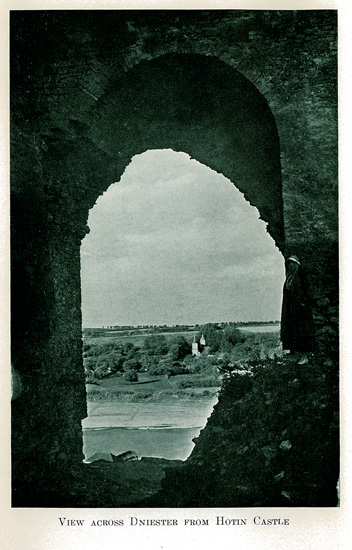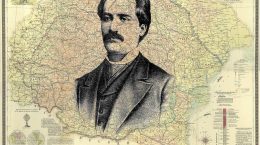 COMMUNIST MACHINATIONS
COMMUNIST MACHINATIONS
We now wish to describe the Bolshevist maneuvers in Bessarabia, as unveiled by the Tatar Bunar trial and an interesting book by an Inspector-General of the Roumanian Sigurantza (Secret Service), “Mishcarea Subversiva in Basarabia” (The Subversive Movement in Bessarabia), Z. I. Husarescu, Kishineff, State Printing Office, 1925. The Bolshevist policy has been to foment everywhere rebellion of the proletariat and destruction of the land-owning and capitalistic class, especially in adjoining countries. Their propaganda was especially easy in Bessarabia, where this no boundary but a river, frozen over in winter; no marked difference in the peasantry on either side of the line; and many thousands of Russian refugees, among whom their emissaries would not be remarked. (…)
The Bolshevists took advantage of this. They had organized in Kishineff during the incumbency of the Diet; and in April 1918, they elected as their president Ivan Krivorukoff of Bender, who is now one of the governing board of the Autonomous Moldavian Socialist Soviet Republic across the Dniester. Their organization was so thorough that they soon had a force of 2000 well-armed men in the county of Kishineff, ready to seize their weapons at a moment’s notice from the Soviets. In one ward of Kishineff they had 150 men, with 2 machine-guns, 20 rifles and 40 revolvers; in another, 50 men, with 30 rifles and 20 revolvers. According to, instructions from Russia, these forces were to be used for surprise attacks, the murder of superior officers, the seizure of supplies and ammunition, when the revolution should break out. Enormous use has been made of proclamations and manifestoes, partly printed in Russia (both in Russian, Ukrainian and Roumanian), but mainly in secret local printing-establishments. Before the Hotin uprising, e. g., they distributed manifestoes beginning as follows: “Workers and peasants, from the rivers of blood of the old world and the ruins of the imperialist war is growing a new socialist body. We, workers and peasants of Bessarabia, are beginning the fight for the establishment of the power of the Soviets, so that they alone may have power over the land and the factories. The outer front has now changed to an inner front of civil war; but the Roumanian soldier will not raise his bayonet for the revolutionary movement.” But the Moldavian peasant was not impressed. This conservatism of the Roumanian peasant, poor material for Bolshevism, is the more remarkable when one remembers the receptivity of the Bulgarian peasant. (…)
But in March 1919 the Russian kaleidoscope changed again. The Allied forces abandoned Russia definitely to the Bolshevists ; Petliura was driven out of the Ukraine, and his smartly dressed officers became familiar sights in Roumanian cafes; the German, French and Italian Communists won unexpected victories; Bulgaria fell in with the current, and Bela Kun turned Hungary into a Communist Paradise. The Russian Communists had their heads turned. They foresaw absorption of Poland and Roumania into a great Bolshevist state, which should extend on the west to Germany, Italy and Bulgaria. So once again they poured men and money in Bessarabia. On April 22, 1919, a secret Bolshevist Congress was held in Kishineff, which chose a delegation to go to Kieff for money for armament, and which brought out a manifesto, distributed all over Bessarabia.
The uprising was to begin in May 1919; several Bessarabian regiments were formed in the Ukraine, and all former soldiers and officers (up to the age of 50) were mobilized along the frontier, with headquarters at Tiraspol, opposite Bender. There were however many desertions, and other difficulties, which caused the Committee to request from the Military Council at Odessa a postponement till July. This was granted all the more readily in that it would coincide with Bela Kun’s Communist attack on Roumania from the west, for which he had been accumulating troops and cannon ever since his successful experiment with the Czecho-Slovaks. Through the influence of Hungarian propaganda, we have been taught to regard this campaign along the Theiss as an unprovoked descent of the Roumanians on a defenseless foe-an especially amusing perversion of the truth, since it involves support of Bolshevism; for the actual facts, see chapter XVIII of my “Greater Roumania.”
In spite of these careful preparations, hotheads again precipitated matters, and an attack was made on Bender (Tighina) from Tiraspol, with troops and machine-guns, the night of May 26, 1919; the French frontier post was driven back, but a Roumanian regiment which was hurriedly brought up, succeeded in driving the invaders back. Rakovsky now took more direct control, and together with military preparations, appointed a whole Bessarabian administration, to be installed immediately after the Revolution. This however was a false step. The Kishineff Provincial Committee, which had its eye on the offices, protested at once, characterizing the proposed administration as the result of “lobbying in interested quarters,” and several of its members as “without character or impartiality, or fitness for the high offices assigned them.” Indeed, the Committee appointed its own ticket, but called it the Bessarabian Revolutionary Center.
In July, everything seemed ripe. Bela Kun had massed his six divisions along the Theiss, opposite the two Roumanian divisions stationed there; the Ukraine was in Bolshevist hands; the Roumanian Socialists planned a general strike; Bessarabia was reported to be in a ferment of discontent. The blow was dealt. In a brief note, the Soviets demanded of the Roumanian Government: 1) the immediate evacuation of the Roumanian Army and officials from the whole of Bessarabia; 2) that all the Bessarabian leaders should be handed over for judgment to a people’s court; 3) that all property belonging to Russia and the Ukraine be restored to them. “The Socialist Workers’ Governments of the Ukraine and Russia will wait 48 hours for a clear and precise answer regarding the acceptance of the conditions; in contrary case, they reserve themselves full liberty of action as regards Roumania. Telestchenko, Commissioner of the Russian People for Foreign Affairs. Rakovsky, President of the Commissioners of the People of the Ukrainian Socialist Republic.”
There never was a more complete fiasco than this Bessarabian Revolution. The Roumanian Secret Service immediately arrested the President and Secretary of the Provincial Communist Committee; the President of the Provincial Revolutionary Military Committee; the Presidents of three of the ward organizations in Kishineff ; the Commander of the Jewish Battalion; the printer for the Provincial Committee; and the members of all the county committees. Touch with the Ukraine was lost before it was established. The Odessa Committee vacillated for six or seven weeks, and then decided to send a number of its best propagandists, provided with false papers, to Kishineff. They followed three different routes, met in Kishineff, effected. a weak reorganization, and were engaged in trying to get their comrades out of jail by means of bribes, when the Roumanian Secret Service laid hands on them all. That was the end of the Bessarabian Revolution.
Bessarabia
Russia and Roumania on the Black Sea
By
Charles Upson Clark
Publisher Dodd, Mead & Company, New York, 1927
(Presented by Civic Media to the heads of the missions at the NATO Summit -Bucharest)
Source: University of Washington.edu via Ziaristi Online




